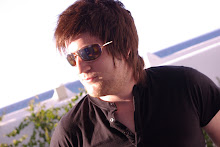Weston Grand pier burning down:
To do this we used two tools, a minidisk with a dual microphone attachment, and also a Fostex field memory recorder. We were introduced to the basic controls of the equipment, and shown how to judge quality of sound by reading audio levels (on the Fostex field memory recorder) using decibels and hertz (amplitude and pitch/frequency).
Once we had learnt how to get the balance of sound right for recording, we also needed to take into account any local variables within the surrounding space, which we wish to record, which may disrupt sound quality. When interviewing someone it is best to have a quiet room, this also means appliances such as fridges (which sound may change during the recording) to be turned off. Also rooms must be tested for echo. Small noises, even the constant noise from air conditioning, can ruin audio in some cases, as "the sound-man" is able to hear things much louder than the human ear, in order to pick up things that may disrupt the recording.
We also learnt about how sound travels. with reference to Young's modulus showing us how sound travels faster through spaces that have tighter molecules (see Figure 1A) like a desk which is a solid. Sound travels slowest through air, as the molecules need the time to stretch and compress like a mexican wave, as they are more widespread. Liquid is in-between solid and gas and therfore sound travels slower than through a solid, but faster than through a gas. The speed of sound is 344m/sec with relative humidity and sea level.
Figure 1A

We also learnt a bit about soundscapes. Soundscapes can create an atmosphere within e.g. a radio broadcast, if the soundscape was a playground, the sounds you would pick up would be ones associated with that are. Some sounds you may pick up to create this soundscape are: kids in park, football being kicked, birds, dogs, roundabout, swings etc. These sounds are best recorded seperately and mixed in together later using the Pro tools editing software.
Pro Tools user interface:


1 comment:
Your second entry has 1 video, 1 diagram and 7 links of which 6 go to wikepedia. Try to go to original sources in preference to wikepedia. have a look at the other students blogs. Please change the links e.g. protools should link to the Protools site.
Post a Comment